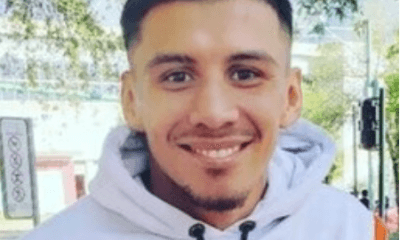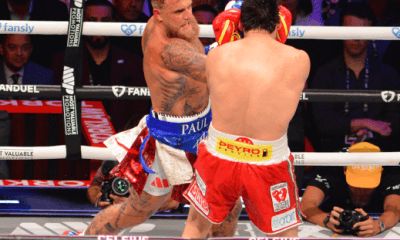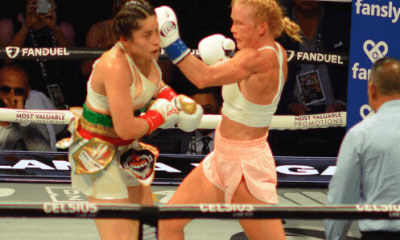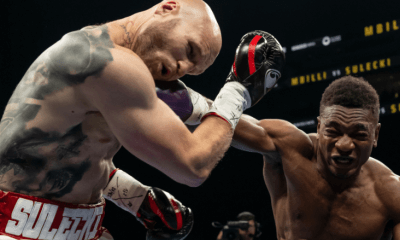Featured Articles
Deontay Wilder First Member of Heavyweight Troika to Test the ‘Rule of Three’
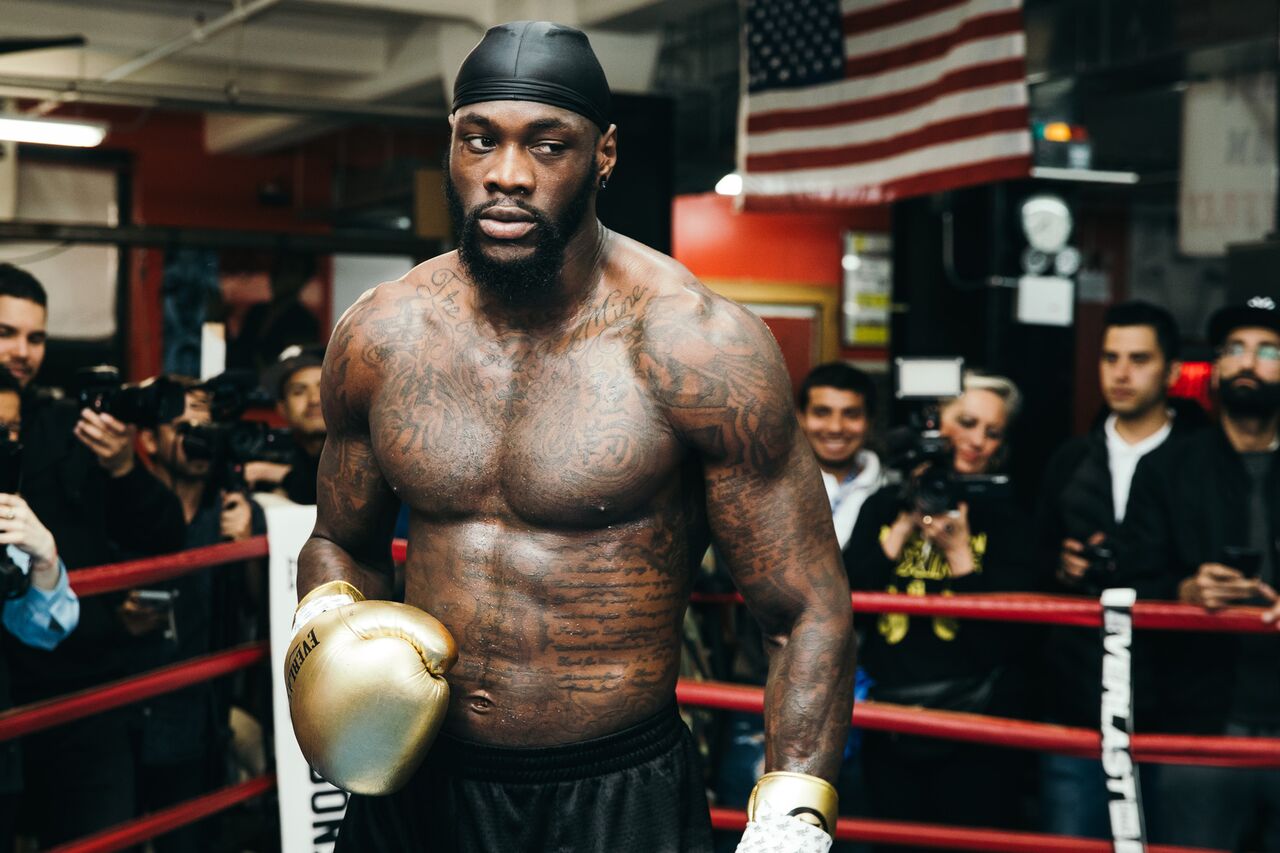
There is a commonly accepted notion that “good things always come in threes.” The so-called “Rule of Three” principle suggests things that come in threes somehow are inherently more humorous, satisfying and effective than any other numerical grouping.
For those who dismiss such a blanket proposition out of hand, consider the following: beloved nursery rhymes (Three Little Pigs), classic literature (the Bronte sisters and Alexandre Dumas’ The Three Musketeers), the Bible (Ecclesiastes 4:12 holds that “a cord with three strands is not quickly broken”) and entertainment (what little kid did not love three-ring circuses?). In sports, baseball’s three best centerfielders (Willie, Mickey and The Duke) once all played in the same city, New York, and one of them, Mickey Mantle, won the batting Triple Crown in 1956. Golf’s popularity on television skyrocketed in the 1960s with the emergence of Arnold Palmer, Jack Nicklaus and Gary Player as a “Big Three” whose revered members always seemed to be bunched atop the leader board for the final round of major tournaments.
Boxing’s heavyweight equivalent to Arnie, Jack and Gary arose to prominence in the 1960s and 1970s, with Muhammad Ali, Joe Frazier and George Foreman held in higher public esteem than others in the big-man division, and demonstrating why they should have been with their dominating performances in the ring. To be fair, Larry Holmes’ eventual emergence as a great champion expanded the Big Three to a Big Four, but his prime did not intersect as neatly with those of his peers to fully validate his delayed inclusion into that particular era’s golden circle.
There is another saying – what goes around, comes around – that would appear to have merged with the Rule of Three as the heavyweight division again has separated itself into tiers, with undefeated champions Deontay Wilder (40-0-1, 39 KOs), Anthony Joshua (22-0, 21 KOs) and Tyson Fury (27-0-1, 19 KOs) ensconced at a level well above that of a secondary group scrambling for improved position and possible upgrades. The good news is that the current Big Three all have bouts scheduled within a 29-day period, offering fight fans a chance to observe and compare their relative strengths and weaknesses as to which chest-thumping titlist deserves to be widely recognized as the best of the bunch.
The bad news is that this latest elite group of three will not be going head-to-head in any of the matchups, instead engaging seemingly lesser opponents in contests whose outcomes at first glance would appear to be preordained. Should any of the longshots cash a winning ticket, as was the case in the recent Kentucky Derby, when 65-to-1 outsider Country House was declared the winner after an in-race foul kept the wagering favorite, Maximum Security, from having a blanket of roses placed around his neck, the hoped-for round-robin elimination process involving Wilder, Joshua and Fury will take a major hit.
Wilder, the WBC titlist, gets things started this Saturday night when he takes on his mandatory challenger, former football player Dominic Breazeale (20-1, 18 KOs), in the Showtime-televised main event at Barclays Center in Brooklyn, N.Y. But while the outrageous Wilder is hyping that fight by suggesting he will literally and gleefully beat Breazeale to death, the result of some sort of personal animosity stemming from an out-of-the-ring confrontation in an Alabama hotel lobby in 2017, his thoughts never seem to stray far from Joshua and Fury, the principal roadblocks in his path to clear recognition as the No. 1 guy. And as everyone familiar with Buster Douglas’ shocker over an underprepared and unmotivated Mike Tyson understands, peering too far ahead into the future instead of concentrating on the present can have dire consequences.
“Hey, Dominic Breazeale asked for this,” Wilder told reporters after a recent workout at Gleason’s Gym in Brooklyn. “I didn’t go seek him, he sought me so if (death) comes, it comes. This is a brutal sport, this is not a gentleman’s sport. I keep saying this is not a gentleman’s sport. I’m still trying to get a body on my record. This is the only sport where you can kill a man and get paid for it at the same time. It’s legal, so why not use my right to do so?”
Such intemperate and inflammatory remarks do not cast Wilder in a positive light, just as the then-19-year-old Mike Tyson, following his brutal, fifth-round knockout of Jesse Ferguson, with a ripping right uppercut, eventually came to regret his comment that “I wanted to drive his nose bone up into his brain.” Oh, and Wilder should be aware by now that fighters who actually did fatally pummel opponents, such as the late Emile Griffith and Ray “Boom Boom” Mancini, were consumed with remorse for the remainder of their careers.
Wilder’s latest vow of violence might be extreme even for him, but he does have a sledgehammer right hand and his knockout ratio of 97.5 percent is highest among all heavyweight champions. But even should Wilder add Breazeale to his list of victims who were unable to go the distance, this supposed grudge match only matters in terms of how far another KO for the lean Alabaman advances the needle concerning a rematch with Fury or a full unification showdown with Joshua.
It took a 12th-round knockdown of Fury, the lineal champion, for Wilder to salvage a split draw in their classic bout of Dec. 1, 2018, which all but screamed for a second pairing to be made sooner rather than later. But Fury chose to sign a co-promotional deal with Top Rank and its broadcast partner ESPN, putting him on the other side of a fence and raising doubts that the much-anticipated do-over would ever take place. And as far as a clear-the-decks meeting involving Wilder and Joshua, each side contends it is the other gumming up the works with protracted negotiations that never seem to reach a resolution amenable to all parties.
“He didn’t want (a rematch), that’s why he’s fighting another guy,” Wilder said of Fury, who takes on German Tom Schwarz (24-0, 16 KOs), who is a household name mainly in his own household, on June 15 at the MGM Grand in Las Vegas. “He didn’t want that fight, or it would have been happening. I wouldn’t have had to fight my mandatory. I would have went straight to Fury.
“I hurt Tyson Fury very badly. I gave him a concussion. When you got a man who don’t understand how he got on the ground, or how he got up, his brain has been shook. He don’t need that fight again. Hey, if you need a warmup or a tuneup to see if all your marbles are back in place, go do that. Take as many warmups you need. (Fury) said he’s got three more fights and he’s out of here. If one of those fights is me, I’m gonna finish him. I’m gonna finish the job.”
And Joshua, the super heavyweight gold medalist for the United Kingdom at the 2012 London Olympics? The big Briton makes his American debut on June 1 at Madison Square Garden against pudgy Mexican-American Andy Ruiz Jr. (32-1, 21 KOs), who will be filling in for Jarrell “Big Baby” Miller, who failed three drug tests in quick succession and was obliged to relinquish his slot.
“With Joshua, for four months we tried (to reach a contractual accord),” Wilder said. “But it don’t matter. I’m more exciting than (Fury and Joshua). Those guys don’t bring excitement like I bring. Tyson Fury is the most boring one. I just do what I do best, and it’s to knock guys silly. I’m not in competition with none of them.”
But for any member of the Big Three to claim superiority over the others without competing against them is misleading at best, and fraudulent at worst. These are fights that require no further marinating, and even the party crashers they are likely to dispatch in the immediate future are like appetizers that shouldn’t satisfy fight fans’ hunger, or their own.
Nibbling on the hors d’oeuvres for now will have to do, but the doors to the banquet hall remain closed. Until that changes, the Big Three heavyweights are like solitary occupants of their own little islands, wondering, like the rest of us, who deserves to rule the archipelago.
Bernard Fernandez is the retired boxing writer for the Philadelphia Daily News. He is a five-term former president of the Boxing Writers Association of America, an inductee into the Pennsylvania, New Jersey and Atlantic City Boxing Halls of Fame and the recipient of the Nat Fleischer Award for Excellence in Boxing Journalism and the Barney Nagler Award for Long and Meritorious Service to Boxing.
Photo credit: Amanda Westcott / SHOWTIME
Check out more boxing news on video at The Boxing Channel
Ro comment on this story in The Fight Forum CLICK HERE
-
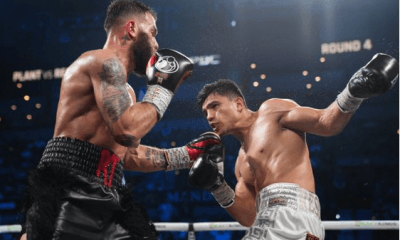
 Featured Articles4 weeks ago
Featured Articles4 weeks agoA Night of Mismatches Turns Topsy-Turvy at Mandalay Bay; Resendiz Shocks Plant
-

 Featured Articles2 weeks ago
Featured Articles2 weeks agoAvila Perspective, Chap. 330: Matchroom in New York plus the Latest on Canelo-Crawford
-

 Featured Articles1 week ago
Featured Articles1 week agoVito Mielnicki Jr Whitewashes Kamil Gardzielik Before the Home Folks in Newark
-
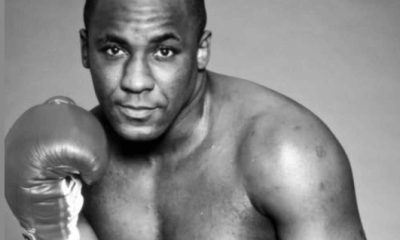
 Featured Articles4 weeks ago
Featured Articles4 weeks agoRemembering the Under-Appreciated “Body Snatcher” Mike McCallum, a Consummate Pro
-

 Featured Articles4 weeks ago
Featured Articles4 weeks agoAvila Perspective, Chap 329: Pacquiao is Back, Fabio in England and More
-

 Featured Articles3 weeks ago
Featured Articles3 weeks agoOpetaia and Nakatani Crush Overmatched Foes, Capping Off a Wild Boxing Weekend
-

 Featured Articles3 weeks ago
Featured Articles3 weeks agoFabio Wardley Comes from Behind to KO Justis Huni
-

 Featured Articles2 weeks ago
Featured Articles2 weeks agoCatching Up with Clay Moyle Who Talks About His Massive Collection of Boxing Books

